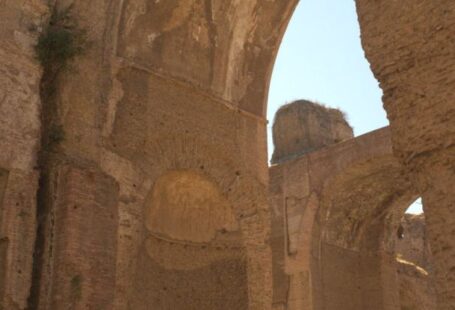The Appian Way, one of the oldest and most significant roads in ancient Rome, offers a unique opportunity for modern-day travelers to immerse themselves in the rich history of the Roman Empire. Stretching from Rome to the port city of Brindisi, this ancient road has borne witness to countless events and played a crucial role in shaping the destiny of Rome. A walk along the Appian Way is not just a leisurely stroll; it is a journey back in time, a chance to connect with the past and gain a deeper understanding of the people and events that have shaped the course of history. So, can a walk along the Appian Way teach you about ancient Rome? Let’s explore this fascinating question.
**Unraveling the Layers of History**
As you set foot on the ancient stones of the Appian Way, you are stepping into a world that dates back over two millennia. The road itself was commissioned by the Roman censor Appius Claudius Caecus in 312 BC, with the aim of facilitating trade and military movements. Walking along the Appian Way, you can almost feel the weight of history beneath your feet, as you pass by ancient ruins, tombs, and milestones that tell the story of Rome’s rise to power.
**Exploring Ancient Tombs and Mausoleums**
One of the most striking features of the Appian Way is the abundance of ancient tombs and mausoleums that line the road. These imposing structures served as final resting places for Rome’s elite, showcasing their wealth and status even in death. Walking past these tombs, you can marvel at the intricate architecture and decorations that speak volumes about the beliefs and customs of ancient Romans. From the grandiose mausoleum of Cecilia Metella to the humble columbarium of the freedmen, each tomb offers a glimpse into the lives of those who once walked the streets of Rome.
**The Appian Way and Roman Military Power**
In addition to its role as a commercial thoroughfare, the Appian Way played a crucial role in Rome’s military strategy. As you walk along the ancient road, you can imagine the legions of Roman soldiers marching towards distant lands, their footsteps echoing the rhythm of conquest. The milestones that dot the Appian Way served as markers of distance and triumph, reminding travelers of the might of Rome and the extent of its dominion. By retracing the steps of Roman soldiers, you can gain a deeper appreciation for the military prowess that allowed Rome to build an empire that spanned three continents.
**Connecting with Roman Daily Life**
Beyond its military and commercial significance, the Appian Way offers insights into the daily life of ancient Romans. Along the road, you can find remnants of ancient villas, taverns, and bathhouses that once bustled with activity. These ruins provide a glimpse into the daily routines of Roman citizens, from the leisurely baths to the lively discussions in the taverns. Walking along the Appian Way, you can almost hear the echoes of ancient voices and feel the pulse of a society that laid the foundations for Western civilization.
**In Summary**
A walk along the Appian Way is not just a stroll through ancient ruins; it is a journey through time that allows you to connect with the people and events that shaped the course of history. From the grandeur of ancient tombs to the echoes of Roman legions on the march, the Appian Way offers a multifaceted glimpse into the world of ancient Rome. So, can a walk along the Appian Way teach you about ancient Rome? Absolutely. By immersing yourself in the history and heritage of this ancient road, you can gain a deeper understanding of the civilization that continues to captivate and inspire us today.





